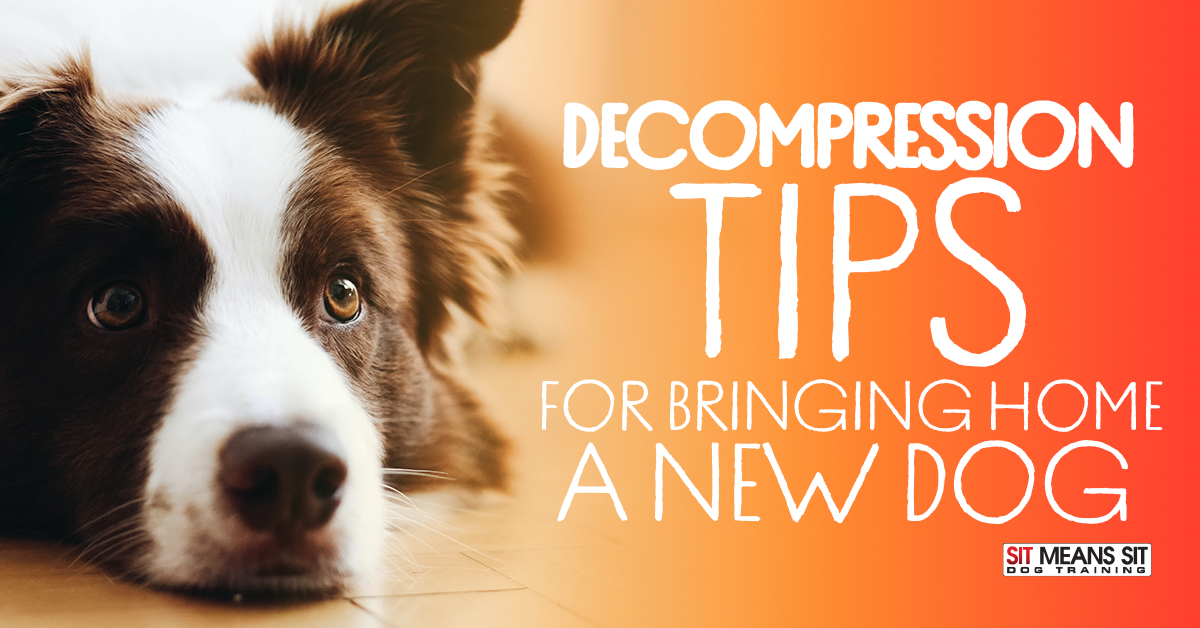
Decompression Tips When Bringing Home a New Dog
When we bring home a new furry family member, they all react differently. A common one is to be riddled with anxiety. Don’t worry, this doesn’t mean you’re a bad pet parent, your pet just needs space, a simple routine, and time to get to know and trust you. This may seem counter-intuitive, especially with the emphasis on socializing new pets, but your new fur baby needs time to decompress in their new environment.
Some dogs may need a few weeks or months to acclimate if they fearful or stressed in the shelter. A reputable breeder will appropriately socialize puppies, helping them take less time to adjust to a new home and environment.
When we get a new dog, it’s natural to want to shower them with affection and play with them, especially children. There’s a good chance that it will be a stimulus overload. New place, new people, new smells. Be patient. Let your dog explore his new surroundings, and introduce new experiences gradually, even those as simple as petting.
For puppies, there is a critical sensitive socialization period between about 3-14 weeks of age. Like sponges, they soak up experiences that shape their future behavior. Proper socialization at a young age is important for a well-adjusted adult dog.
Routine
One of the reasons dogs are so nervous in a new home is because their routine has changed. It will take some time for them to get comfortable in their new routine in your home. After first adopting, keep things quiet for a few weeks, letting them adjust. It’s a major transition. For puppies, they got plucked from everything and everyone they have ever known and are now with a stranger in a strange place. For rescue dogs, there is generally little known about their history. For instance: how many homes or shelters did they came from, were they on the street or in a home, did they have poor or proper care, or were they socialized as a puppy, to name a few.
Having a consistent schedule can lower stress levels during acclimation in their new home, helping to reduce exaggerated stress responses. Routines as simple as consistent feeding times, potty breaks, naps, training sessions, and playtime can help any aged adjust to their new home and family.
Stress
Stress level signs in dogs are different than those in humans. Their body language is the biggest sign in showing you what they are feeling. Common stress signals are:
- Panting
- Pacing
- Tucking of the ears or tail
- Lip licking
- Yawning
- Freezing
- Crouching
- Growling
Growling can be more than a sign of stress; it may be that they feel threatened or uncomfortable. This signal is a POSITIVE behavior. This is a dog’s way of communicating a warning, a red flag. Punishing this behavior increases the risk that a dog will bite without warning in the future. Instead, allow your dog a safe space. This could be anything from an enclosed kennel to another room, where they know it for their alone time and is honored in the home.
Environmental enrichment can be a stress-reliever particularly when you aren’t around. Treat dispensing toys and nosework activities such as a snuffle mat are popular ones.
Building a Strong Bond
A bond starts simple – spend quiet time together. When they are ready, offer affection, food, and calm playtime. Training is another way to bond. Begin indoors, simple, and on a short time frame. Use toys, food, and praise to bond and build confidence. Once your bond has increased, go on some slow walks together. Stop to smell the roses. This helps your dog figure out where he is and what close to home smells like. Let him explore, as this is a beneficial decompression tool as well.
Ultimately, give your dog choices to have their own personality. This is crucial to their well-being, especially during their decompression period.
